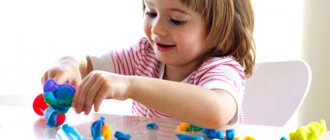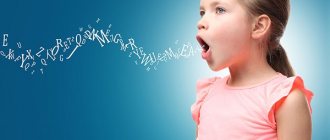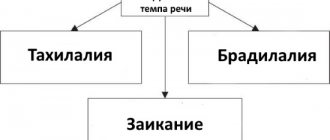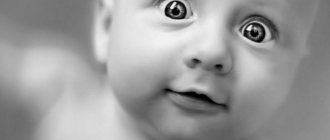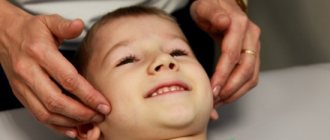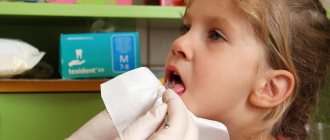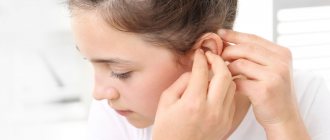Article:
Art therapy is a correction of neurological disorders, available to both children and adults.
Everyone can choose an activity to their liking: working with paper, modeling, drawing, mosaic, etc. The therapeutic effect of the method is the release of negative emotions and experiences through art. At the same time, such activities help lift your mood and relax the nervous system. In speech therapy, with the help of this practice, specialists achieve positive dynamics in speech disorders of various types, since they almost always occur with neurological symptoms. The method can be used for therapeutic and prophylactic purposes.
Characteristics of the method
Pathologies of speech development occur most often in preschool age. They manifest themselves with various clinical symptoms, but with preserved hearing and intelligence. The intelligibility of pronunciation may decrease, problems with writing and speaking, and communication disorders may arise. With deviations in speech development, secondary diagnoses, speech negativism, and neurological deviations are noted. Such children find it difficult to perceive and process information, which subsequently leads to falling behind their peers.
Types of art therapy:
- active;
- passive.
In the first case, the patient must create something new on his own, in the second, he uses existing works. Treatment can be carried out with an individual patient or in a group. Natural clay, chalk, sand, any leaves, branches, fruits are used as materials; and artificial - paint, gouache, paper, plasticine, rope, cellophane.
Origami normalizes the function of exhalation in children with stuttering and other types of speech pathologies.
It is no secret that every year the number of non-speaking children is not decreasing, but increasing. This becomes especially noticeable when you are seeing young mothers and you have to answer questions about delayed speech development more often than others. Apparently, this can be explained by many reasons, including, for example, the psychophysiological characteristics of young children; lack of scientifically based, sufficiently effective and safe methods for teaching children from birth to 3 years old; conflicting data describing norms of early development. There are still no clear age standards for speech development - some authors consider understanding individual words to be sufficient speech development for a twelve-month-old child; others - the appearance of the first one or two words; Another group of researchers is of the opinion that at this age a child should actively use 15-20 words. Unfortunately, despite the large number of children with developmental delays and problems in the development of their native speech, the traditional approach to speech therapy still “delays” overcoming speech development delays until three years. There is an opinion among domestic and foreign experts: let’s wait until 3 years, and the majority of non-speaking or developmentally delayed children will “go back to normal.” However, there is no doubt that early age is the most important in the development of all mental processes. It is at an early age that the formation of all body systems is noted. As a number of researchers note, the earlier it begins, the higher the effectiveness of correctional and developmental interventions at an early age. My work experience suggests that all this applies to speech. Modern research proves that the role of the mother and family in the development of the baby as a whole, including in his acquisition of his native language, is decisive. Therefore, in my opinion, one of the most important tasks facing a specialist working with young children is to help parents organize a safe space that allows the child to develop harmoniously and to fully reveal their potential. The development of speech is, firstly, one of the conditions for such development and, secondly, an opportunity for the child to express his desires and actively communicate with others. This is where art therapy can provide invaluable help. Infancy (up to 1 year) is a period when communication with an adult is the main activity of the child and the lack of emotional contacts with him can adversely affect his character and speech behavior in the future. During this period, art therapy is one of the most effective means for parents to understand and express their feelings and their attitude towards the child. For the development of speech during this period, the most important is the development of analyzers: auditory, visual, tactile, motor, which is necessary for better perception of speech and other means of early communication. Communication with adults is the main source of information for an infant. For the timely development of speech, the mother herself and other people surrounding the child must constantly communicate with him, trying to evoke a response. It is known that in the earliest stages of a child’s development, his communication with his mother is not silent, they conduct a “dialogue.” At first, mother and child communicate on an exclusively phonic level, using non-verbal elements of speech: melody, rhythm, timbre. The baby learns to understand intonation. At this time, the “training” of a young mother in early communication skills, the “rules” of conducting such a “dialogue”, where one of the important components is the emotional side of communication, comes to the fore in the psychologist’s work. Art therapy methods can help solve this problem. It is important to introduce rituals at this stage. What is repeated every day should not change yet. And all this can be accompanied by rhymes, nursery rhymes, sayings, and melodies. It’s good if the mother herself comes up with a song to which, for example, she will wash or dress the baby. Of course, you can't forget about going to bed. It’s wonderful if a mother has her own lullaby; you can hum something without words that reflects the mother’s feelings and emotional state. You can compose your own songs and rhymes about everything that parents do with their child. An art therapist can provide invaluable assistance here, helping to reveal the creative potential of parents, both in a group and in individual consultations. During this period, folklore traditions can serve as an excellent basis for parental creativity. Probably everyone knows the lullaby: I bayu-bayushki-bayu, Don’t lie down on the edge - A little gray top will come, He will grab you by the side. But this is the lullaby that a mother came up with for her baby. Each mother can also come up with her own song just for her son or daughter. Bai-baiushki-bai, how I love you! Bye-bye-bye-bye, close your eyes tightly! I bay, bay, bay, I love my daughter. Bye-bye-bye-bye, go to sleep quickly. To develop the visual and tactile analyzers, parents can create various toys that convey parental warmth to the child and enable both the child and the parents to feel their emotional involvement in the parent-child relationship. This could be a mobile with bright ribbons, colored paper figures (origami or appliqué), balloons, and other contrasting toys, the production of which does not require much labor from parents who are busy caring for a child. At the next stage of speech development, children develop not only vocal reactions and understanding of addressed speech, but also the appearance of their own active speech. At this time, nurturing the need for verbal communication becomes especially important, which is the basis for the emergence of speech activity. “In the fight” against delayed speech development in children under three years of age, parents try to stimulate their active use of words as often and as much as possible. This often entails an early manifestation of negativism and refusal to follow any instructions from adults. In this case, art therapy may be the safest, most environmentally friendly and effective means for overcoming difficulties in speech development. Parents who are faced with any developmental disorders in their child, for example, delayed speech development, usually feel guilty that their child is lagging behind other children, they may feel that they are not coping with their parental role. These feelings are sometimes transferred to the child, who in turn may lose faith in his own strength and experience his “inferiority.” Therefore, the work of a psychologist or art therapist always involves psychological support for the parents of such children in order to strengthen their self-confidence, help the child, others and parents actively and happily engage in interaction. To teach parents, on the one hand, to be creative together with the child, to organize a creative space for the child, and also, on the other hand, to be sensitive in providing the child with creative freedom, the ability to follow the child in terms of his creative self-expression. The formation of speech motor function is closely related to the development of general motor skills and in particular with the manipulative activity of the hands. In activities involving painstaking manual labor, children with developed fine motor skills often achieve success. Therefore, it is better to carefully measure the first creative works with the child’s capabilities. For example, a young child or a child with weak hand tone is not yet ready to knead plasticine and mold something according to an adult’s instructions. However, most kids are happy to spread plasticine on various surfaces - plastic, wood, cardboard, hardboard. Children may also like the applique of cereals, coins, buttons, beans, and beads on a “plasticine background.” A child can make a wonderful gift for loved ones with his own hands. You will need a jar or bottle of baby food, which the child can coat with plasticine on his own. Mom can help warm and knead the plasticine, giving the child the opportunity to coat the mold on his own. If your child doesn’t have the patience to cover the entire mold with plasticine, you can offer him your help or put off the work for a while. Usually it is more interesting for a child to use different colors, despite the fact that in the future the color of the plasticine used will not be visible, since on top we paint the resulting “vase” with water-based paint. After drying, you can paint the gift with any colors. If the baby does not yet know how to hold a brush, cereal pressed into plasticine (multi-colored peas, lentils, rice) will serve as decoration. Making “beads” and “bracelets” from various materials often becomes one of the child’s favorite activities. Children show particular interest in natural materials, and for parents such “costume jewelry” will not be expensive, but will allow them to show their creative imagination and create unique works. You can string dried fruits on a thread: apples (large ones - cut into circles, paradise ones - whole), blueberries, hawthorn, rowan, various spices are also suitable: star anise, pieces of cinnamon. Art therapeutic techniques can help both in accumulating and activating a child’s vocabulary. A safe art therapeutic space helps, firstly, the mother to see the child’s strengths, his capabilities, and secondly, the smallest person to believe in himself, the intensity of his “negativist struggle” can decrease during creative activities. After a year, when the baby can already begin to use his first words, any interesting activity will intensify his desire to enter into verbal communication with an adult. For example, a child usually really likes painting; the desire to return to his favorite activity can stimulate his speech. A collage or “wall newspaper” about a child’s life, made from photographs of him at different moments in his life, can be a good help. By naming actions in which the baby himself took an active part, the mother will quickly establish emotional contact with the baby and understand which moments are more significant and interesting for him. In this way, using photographs or drawings, you can create a bright and visual collage of the child’s “day routine”. When a child begins to name those objects or actions that he especially likes, his vocabulary grows quickly. The kitchen can also be a wonderful place to improve a child’s speech skills in a creative atmosphere. Working with dough, cereals, and “drawing” on flour not only contributes to the accumulation and use of vocabulary, but also develops the child’s fine motor skills. Any things that are interesting to a child, especially those creative activities in which the whole family or mother and child can take part, most often become an area where the baby actively learns and reproduces new language material.
Source: Non-profit partnership “Art-therapeutic Baltic Center “AIDOS” was created in 2001 in St. Petersburg. The partnership develops advisory, creative, educational, research and sociocultural areas. Author: Kryukova Veronika Igorevna
Application in speech therapy
The tasks of art therapy are divided into general tasks and personal ones. Common ones include:
- development of individual treatment methods for children with developmental disabilities;
- generalization of accumulated knowledge and its implementation in the program for the correction of speech disorders;
- improving personnel training for organizing training in special educational institutions.
The functions of the method are to release negativity, regulate psychosomatic reactions, correct communication disorders, and increase self-esteem. Narrow private goals include the following:
- treatment and prevention of mental disorders;
- creating optimal conditions for the child’s adaptation;
- the technique can also be used for pathologies of hearing, vision, and joint diseases;
- monitoring the effectiveness of therapy;
- assistance to disabled children;
- treatment of secondary disorders.
Exercises with paper become more difficult gradually in accordance with the age of the patient. They start by learning to bend the sheet in half, then in different directions, then fold the crafts according to ready-made patterns.
